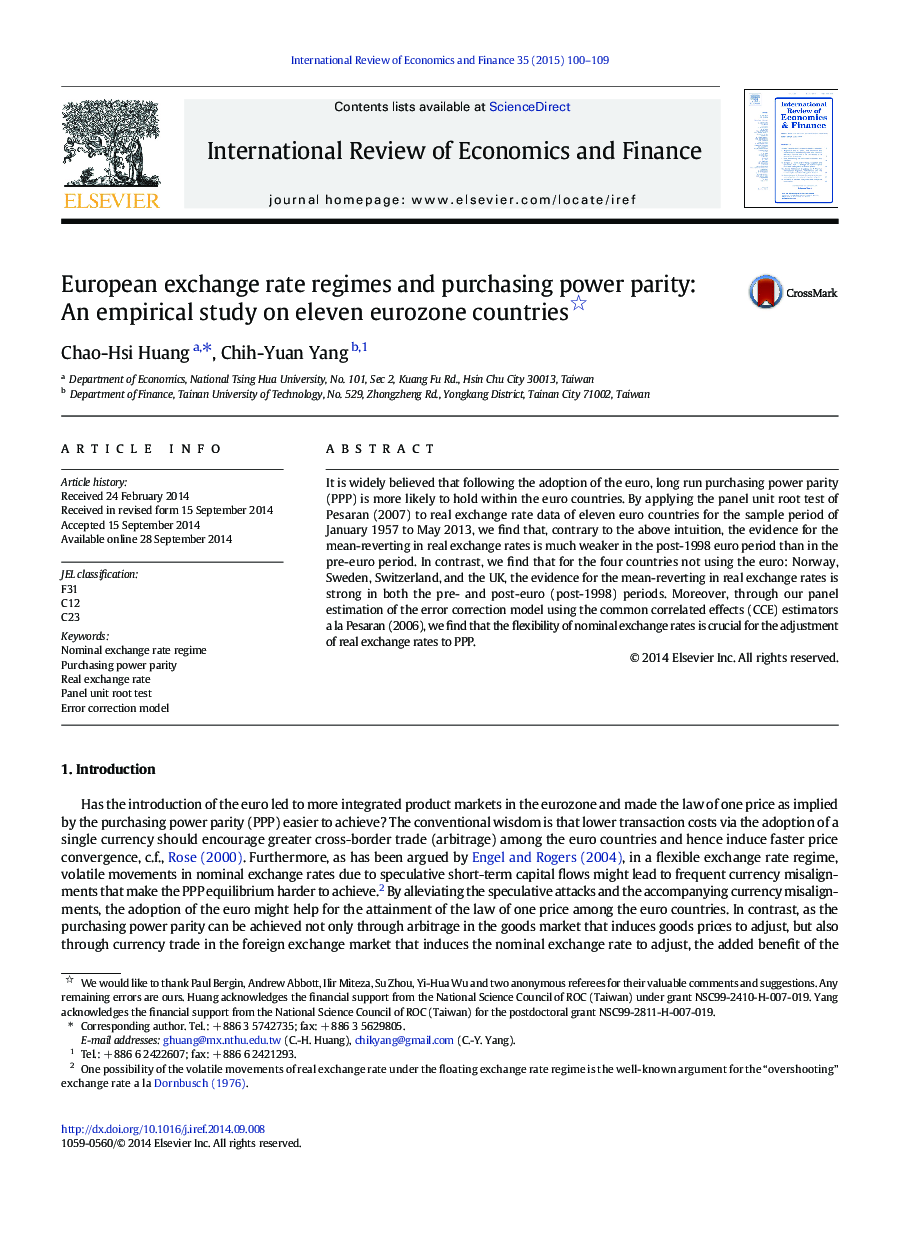| Article ID | Journal | Published Year | Pages | File Type |
|---|---|---|---|---|
| 5083624 | International Review of Economics & Finance | 2015 | 10 Pages |
Abstract
It is widely believed that following the adoption of the euro, long run purchasing power parity (PPP) is more likely to hold within the euro countries. By applying the panel unit root test of Pesaran (2007) to real exchange rate data of eleven euro countries for the sample period of January 1957 to May 2013, we find that, contrary to the above intuition, the evidence for the mean-reverting in real exchange rates is much weaker in the post-1998 euro period than in the pre-euro period. In contrast, we find that for the four countries not using the euro: Norway, Sweden, Switzerland, and the UK, the evidence for the mean-reverting in real exchange rates is strong in both the pre- and post-euro (post-1998) periods. Moreover, through our panel estimation of the error correction model using the common correlated effects (CCE) estimators a la Pesaran (2006), we find that the flexibility of nominal exchange rates is crucial for the adjustment of real exchange rates to PPP.
Keywords
Related Topics
Social Sciences and Humanities
Economics, Econometrics and Finance
Economics and Econometrics
Authors
Chao-Hsi Huang, Chih-Yuan Yang,
